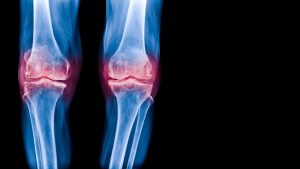Numbness, tingling, discomfort and pain in the fingers.
The carpal tunnel is a narrow passageway in the wrist on the palm side of the hand. It is surrounded by bones and ligaments; nine tendons and the median nerve pass through it. The median nerve provides sensation to and allows movement in the forearm, wrist and hand. When pressure builds up in the tunnel and compresses the median nerve (entrapment neuropathy), it results in Carpal Tunnel Syndrome (CTS).
Epidemiology
Carpal tunnel syndrome (CTS) is the most common entrapment neuropathy, affecting 9% of women and 6% of men, and is responsible for significant morbidity and occupational absence. Its prevalence is approximately 50 cases per 1000 subjects in the general population. White people are at higher risk than Africans and Asians. The female-to-male ratio for carpal tunnel syndrome is 3-10:1. The peak age range for the development of carpal tunnel syndrome(CTS) is 45-60 years. Only 10 per cent of patients with carpal tunnel syndrome are younger than 31 years.
Clinical features
Symptoms include:
- Tingling (electric shock sensation) or numbness usually in the thumb, index, middle or ring fingers, but not the little finger
- The sensation may travel from the wrist up the arm
- Commonly occurs when doing simple daily tasks like holding the telephone, steering wheel or reading the newspapers.
- Also occurs frequently at night, and can awaken you
- To relieve the symptoms, people often flick their wrists as if shaking a thermometer, known as a flick sign.
- Weaker grip
- Numbness of the hand or weakness of the thumb’s pinching muscles may cause you to have a weaker grip and drop objects
Left untreated, the continued wasting and weakening of the muscles of hands and fingers may result in permanent damage or a permanent inability to use your hand and fingers properly.
Causes
CTS is usually caused by a combination of factors e.g.
- Anatomic factors
- The carpal tunnel may be smaller in some people; this trait can run in families.
- The carpal tunnel is smaller in women than in men, thus CTS affects women more commonly.
- A wrist fracture or dislocation can cause deformities in the wrist bones, narrowing the carpal tunnel space and thus pinching the median nerve.
- Overuse of the wrist
- Repeating the same hand and wrist motions e.g. typing or other activities that involve extreme flexion or extension of the hand and wrist for a prolonged period of time may causing swelling of tendons in wrist that puts pressure on the nerve.
- Pregnancy
- Hormonal changes during pregnancy can cause fluid retention and increased pressure on the median nerve
- Health conditions
- Thyroid disorder, kidney failure, diabetes and rheumatoid arthritis are conditions associated with carpal tunnel syndrome, possibly due in part to inflammation and/or nerve damage.
Diagnosis
The diagnosis is usually based on:
-
History
The doctor will review the pattern of symptoms to ascertain if they are typical of CTS e.g. discomfort in the little finger may indicate a problem other than CTS
-
Physical examination
The doctor will test the feeling in the fingers and the strength of the muscles in the hand e.g. by bending the wrist, tapping or pressing on the nerve
-
Ultrasound
An ultrasound can provide a good picture of the bones and nerve, to determine whether the nerve is being compressed.
-
X-ray
X-ray of the affected wrist can exclude other causes of wrist pain e.g. arthritis or fracture.
-
Electromyography
A thin-needle electrode is inserted into specific muscles to evaluate the electrical activity when muscles contract and rest, identifying damage to the muscles controlled by the median nerve.
-
Nerve conduction study
Two electrodes are taped to the skin. A small shock is delivered through the median nerve to see if electrical impulses are slowed in the carpal tunnel.
Treatment
If diagnosed early or mild, CTS may be managed with non-surgical treatment, e.g.
- Wearing a wrist brace/splint:
This keeps the wrist straight to reduce pressure on the median nerve
- Physiotherapy:
Encompasses median nerve gliding exercises which help the median nerve move more freely within the narrowed carpal tunnel
- Medical treatment
Non-steroidal anti-inflammatory drugs (NSAIDs) e.g. ibuprofen or naproxen may be taken orally to relieve pain and inflammation.
Local cortisone injection: Corticosteroids can be injected directly into the wrist to alleviate pain and inflammation, but the relief is mostly temporary.
If non-surgical methods fail to improve symptoms after 6 months, surgery should be considered. The surgical procedure is called a carpal tunnel release; the size of the carpal tunnel is increased by cutting the ligament that forms the roof of the tunnel. This relieves pressure on the median nerve. The ligament tissues gradually grow back together while allowing more room for the nerve. Grip and pinch strength usually return anywhere between 2 to 12 months after surgery depending on severity of symptoms prior to that.
Prevention
To prevent CTS, you can minimise stress on hands and wrist with the following measures:
- Keep the wrist in a neutral position:
- Do not use your wrist in a bent position for long periods.
- During sleep, do not have your wrist flexed or put extra pressure on the wrist for a long time i.e. avoid sleeping with a hand under the stomach.
- If doing frequent computer work, keep your keyboard at elbow height or slightly lower.
- Take periodic breaks: A few minutes’ break each hour is helpful if using equipment that vibrates or if doing work which requires exertion of a forceful grip. Gently stretch or bend hands and wrists during these breaks.
- Improve your posture:
- Sit upright. Slouching and rolling the shoulders forward can shorten the neck and shoulder muscles, compressing the nerves in the neck which can cause neck pain and also affect the hands, wrists, and fingers.
- Physiotherapy: This helps to strengthen muscles of the hands and wrist.
Conclusion
Delayed treatment of CTS may cause permanent loss of function. Seek medical attention soonest with any signs or symptoms of CTS, for relief and prevention of irreversible damage.













